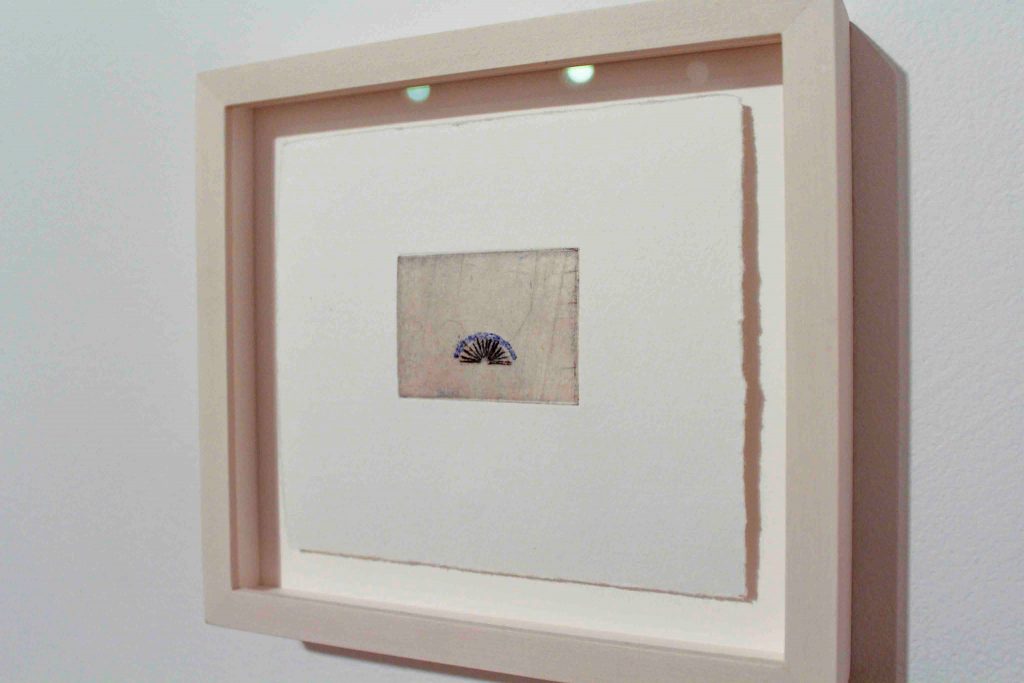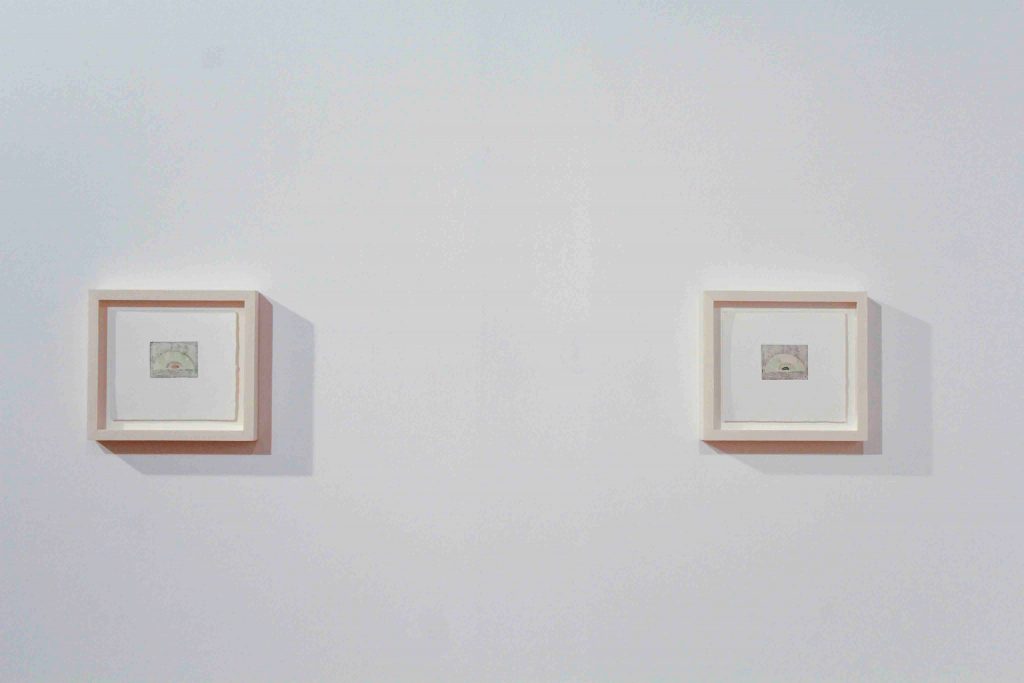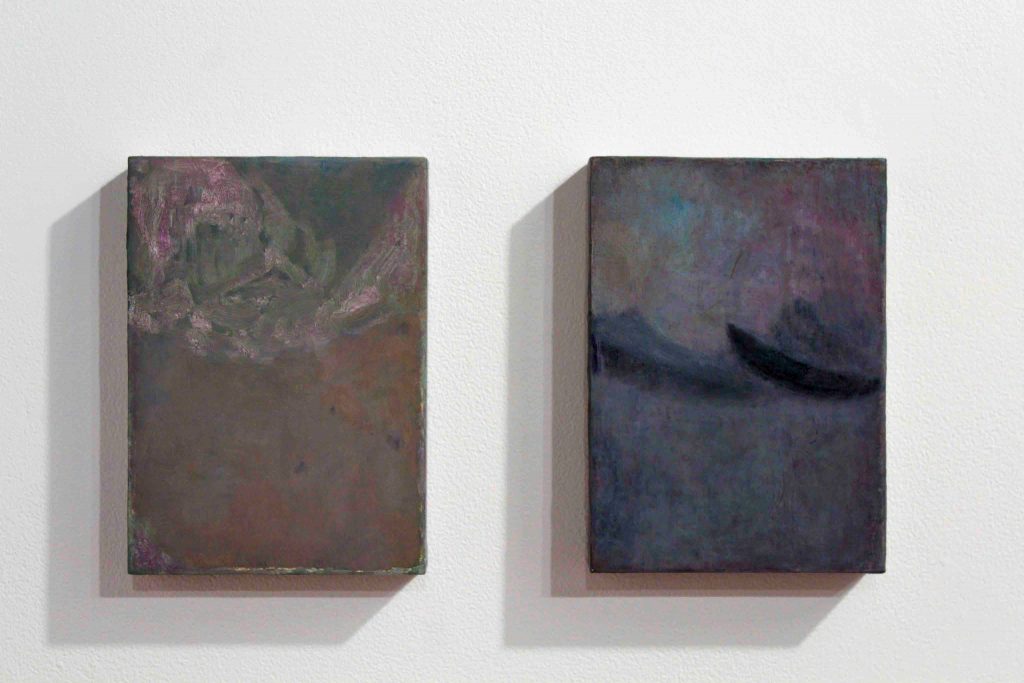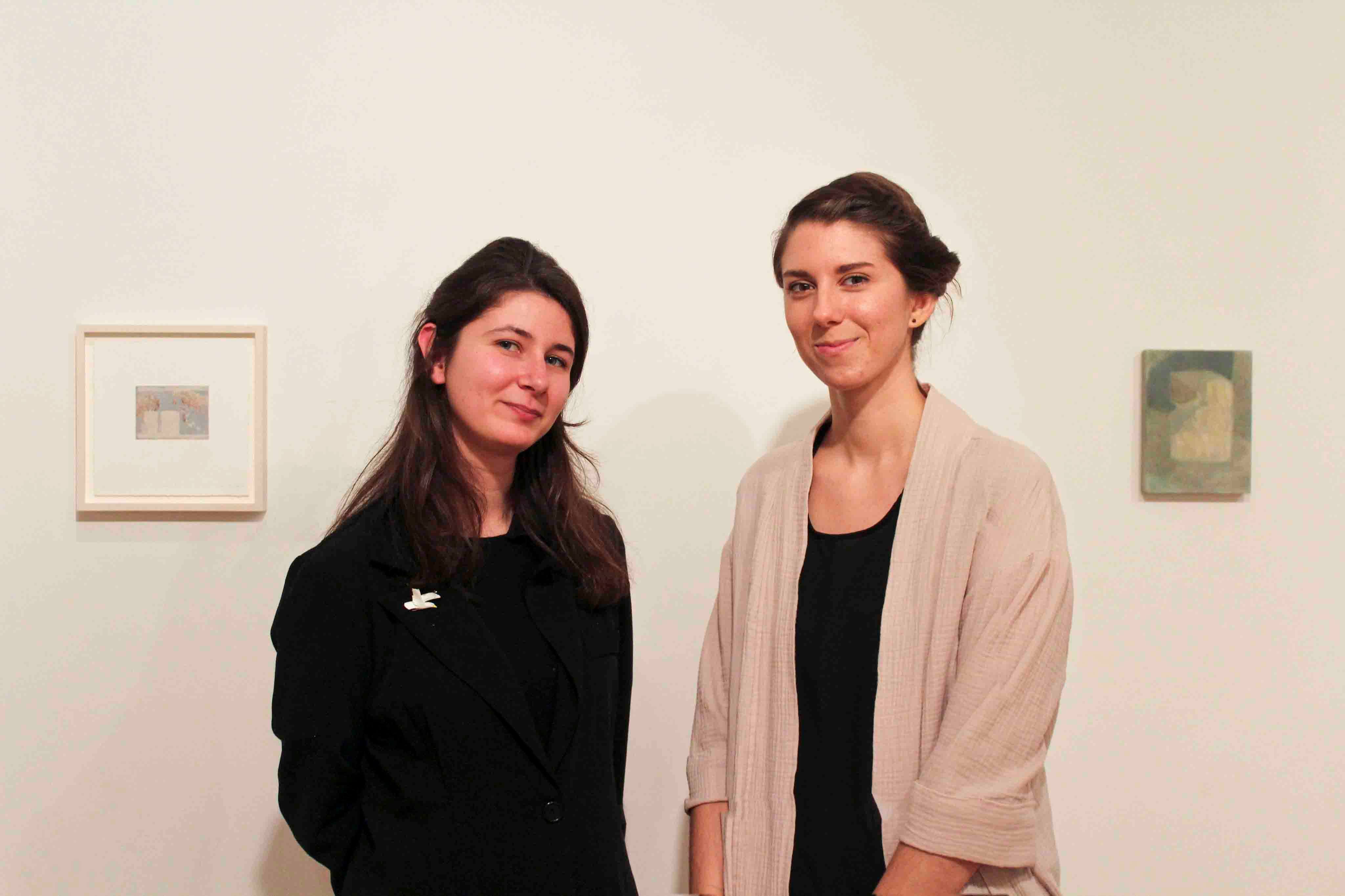Deçà Delà: From painting to printmaking, artists share meditative processes in a joint exhibition
“Deçà delà” is a French expression meaning to unite two separate sides, places or ideas as a way of expressing variety and highlighting differences, while introducing a subject as one cohesive matter.
The current exhibition at Ymuno Exhibitions takes inspiration from this expression, and unites two artists of different mediums—painting and intaglio printmaking. Rosamunde Bordo and Laurence Pilon are both recent Concordia graduates, and share similar approaches to their art. Both artists work in layers and restrict themselves to simple colour palettes.
Bordo holds a bachelor’s degree in Western society and culture, and a minor in print media. Her work is inspired by landscapes, topographies and maps. “In my practice,” Bordo explained, “I toy with the notion that the physical act of making is like an act of remembering. Through recording, repeating and multiplying, I use different techniques in print media as forms of documentation that undergo processes of mediation and transformation.”
Bordo transforms her initial inspirations into symbols, such as the arch and the window, two of the most prominent symbols in her work.

Bordo starts by etching into a copper plate covered with resin. She then dips the plate in acid, which eats away at the areas where the resin has been removed, creating an image or template. Bordo has made 12 of these etchings, and each final print is composed of at least one plate. Some are created by layering several different plates. Arch II and III are nearly identical, but one has one less plate than the other. Arch IV stands out from the rest as Bordo used fewer plates and focused more on the colour. Bordo said she wishes to “emphasize tactility as a way of addressing notions of presence, temporality and change, and use subtle gestures and suggestions to consider broader cultural implications.”
The idea behind the use of arches in Bordo’s work comes from her experience in Maine this summer. According to Bordo, the arch symbolizes the sun. Whether it sets or rises, the sun always encompasses the whole sky. Its light seems endless, yet Bordo limits it by containing it within a geometric shape in her etchings. One striking commonality between Bordo and Pilon is the size and colours of their work. Bordo’s prints are, on average, three by four inches in size, while Pilon’s paintings are all about five by seven inches. The size of their work renders the exhibition quite intimate because the pieces change drastically when viewed close up or from a distance.

Pilon graduated from Concordia in 2015 with a bachelor’s degree in fine arts. Her work has received great distinction, and she has been awarded several grants and scholarships in support of her art, including the Betty Goodwin Prize in Studio Arts and the Lise-Hélène Larin Scholarship, both awarded by Concordia.
Pilon’s process begins with flipping through books and studying archives, art history and music. The musical influence of Claude Debussy, a classical French pianist, is prominent in her work. Pilon urges viewers to listen to Debussy’s music and think of the light it emits when looking at her own work. Like Debussy’s compositions, some of Pilon’s pieces are light and airy, while others are dark and sombre.
Pilon may start painting based on what she sees around her, but ends up with something completely different. This journey is the most important part, in her opinion. In the transformative process of layering and uncovering, Pilon’s work is muddled with the regeneration of her paintings. That is, she paints over something, sands it down and repeats this action until she is satisfied.

The artist regards her pieces more as objects than works of art. In her artist statement, Pilon wrote, “my paintings-objects can also be interpreted as critical responses to contemporary conditions of consumption, endless expansion and instantaneity.”
She is inspired by the arts and crafts movement of the 1920s and postmodern strategies of artmaking. The artist also listed the post-impressionist artists known as the Nabis, the set designs of the Russian ballet and colour field painters as specific inspirations to her work.
Some of Pilon’s paintings have an intentional dusty quality. The artist allows her paintings to gather dust as they dry. She mixes paint dust gathered from the sanding process to emphasize this effect. She paints to capture changes in her subject’s form and its relationship to light.
Pilon’s paintings often mimic other materials, like cement, sand and metal, as is evident in Multi Blue (Clematis), and Avant Garde (Peony).
“Encouraging in their viewers a prolonged visual engagement,” Pilon said, “the resulting objects evoke a sense of timelessness and indistinct familiarity, while communicating paradoxical feelings of fatigue and hope.”
Deçà Delà will be on display at Ymuno Exhibitions until Dec. 16. Ymuno is a joint gallery space and studio for artists Madeline Richards and Ben Williamson, and is located on the fifth floor of the Belgo building (372 Ste-Catherine St. W., studio 530). The gallery is open Thursday to Saturday from 1 p.m. to 5 p.m.
Feature photo by Alex Hutchins.




